The area of the former Amusement Park in the middle of the 18th century was just a swampy place called Ökördűlő, far from the city. In the early 1800s, the people of Pest began to explore it as an area suitable for picnics and fairs. After the performers were banned from the city of Pest in 1808, many of them settled here for a longer or shorter period of time. Soon more and more people came out to visit the carousel, the first hot air balloon, the sword swallower, or other attractions.
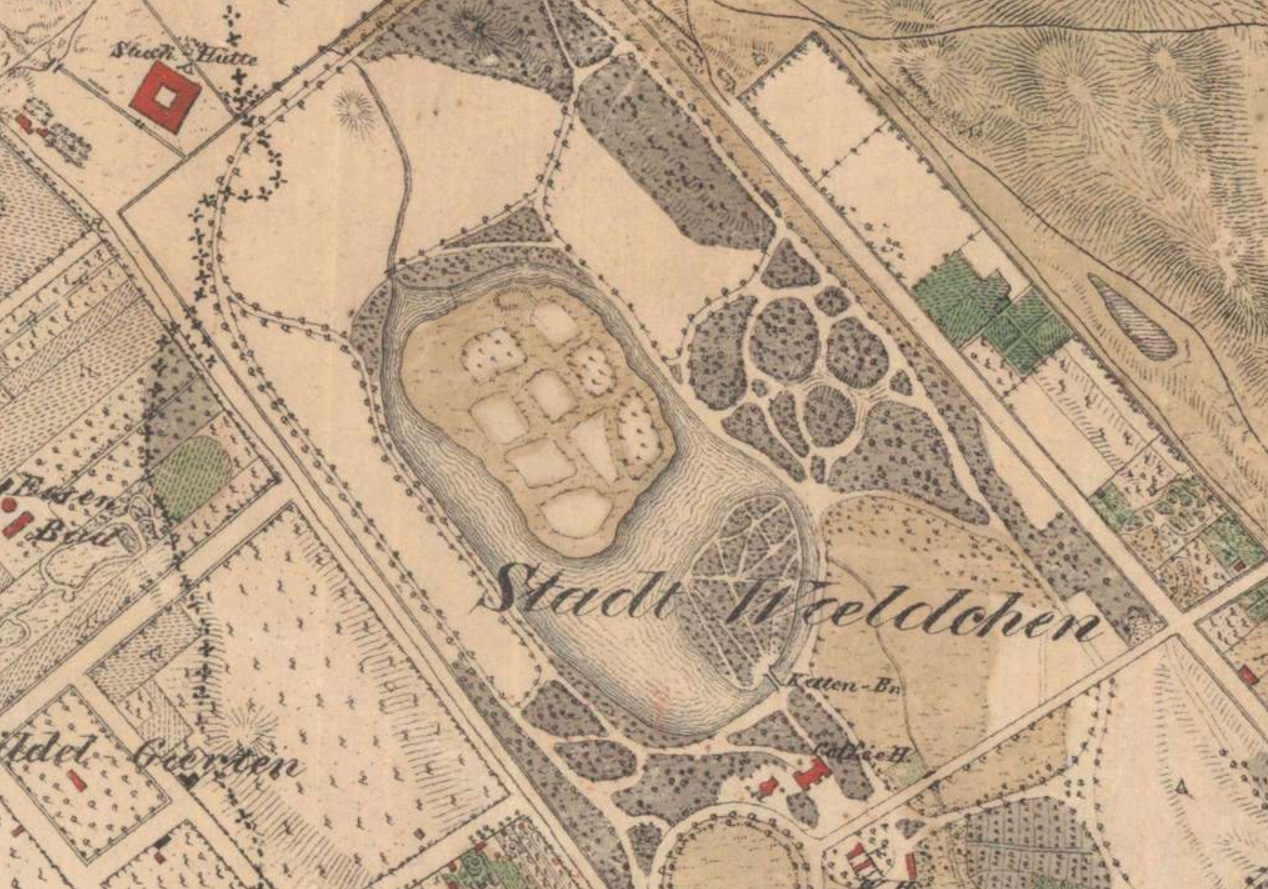
The Városliget on an 1838 map (Source: mapire.eu)
The first, not temporary stall was opened in 1838 by Sebestyén Wexlehner, from which the birth of Vurstli is calculated. By the middle of the 19th century, most performers already had permanent permits and several wooden stalls were built. As the area, then known as the Városerdő, was increasingly landscaped, the thriving pavilions in the grove were relocated several times. The turn of the century was the real heyday of the Vurstli, but it ended in the 1910s, as the Széchenyi Bath under construction slowly pushed the performers out of the area.
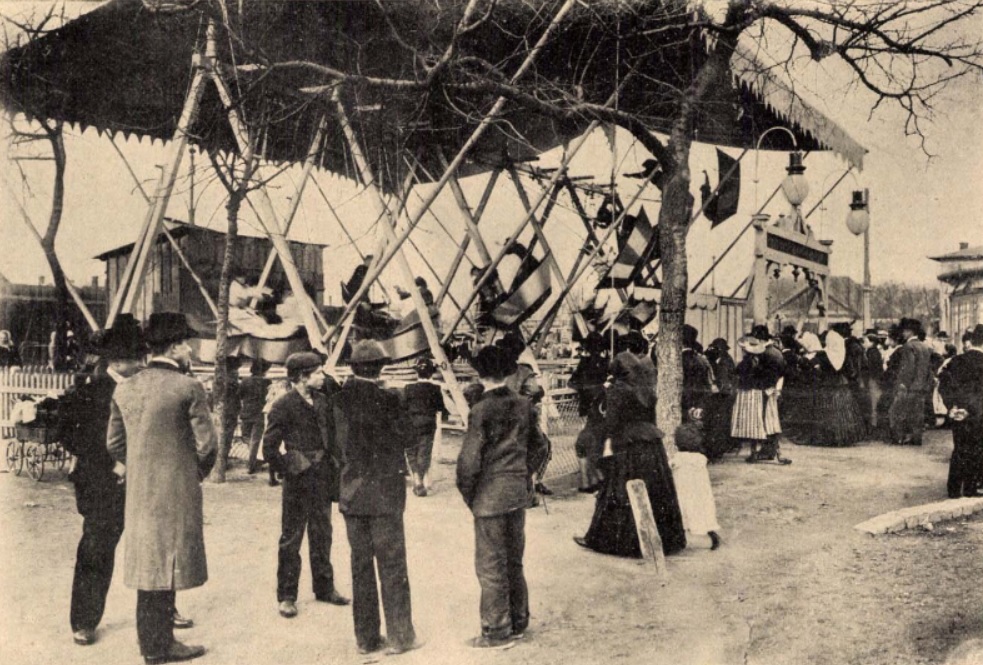
Life in the Vurstli (Source: Uj Idők, 11 May 1902)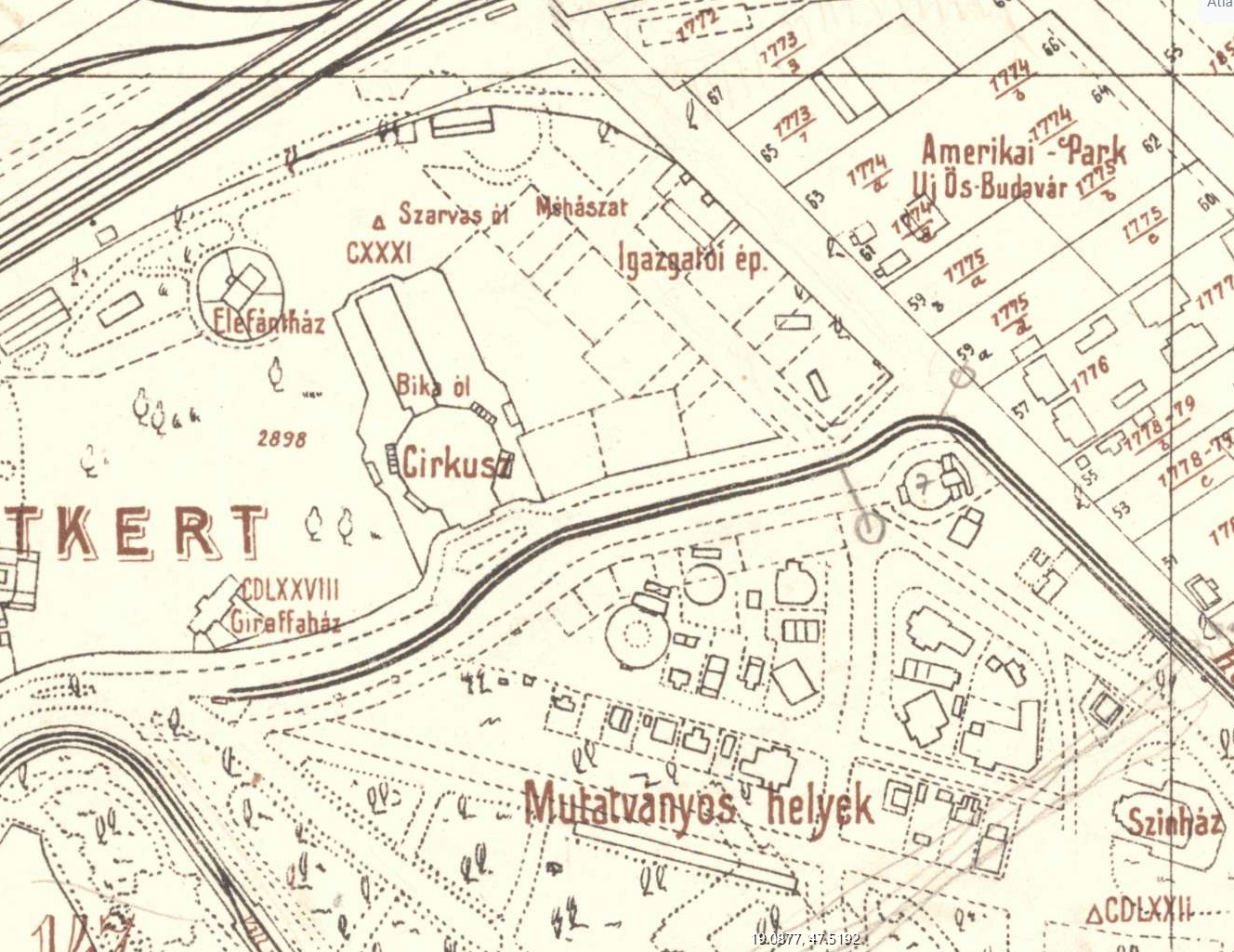
According to a map from 1908, there was a huge place for performers back then (Source: mapire.eu)
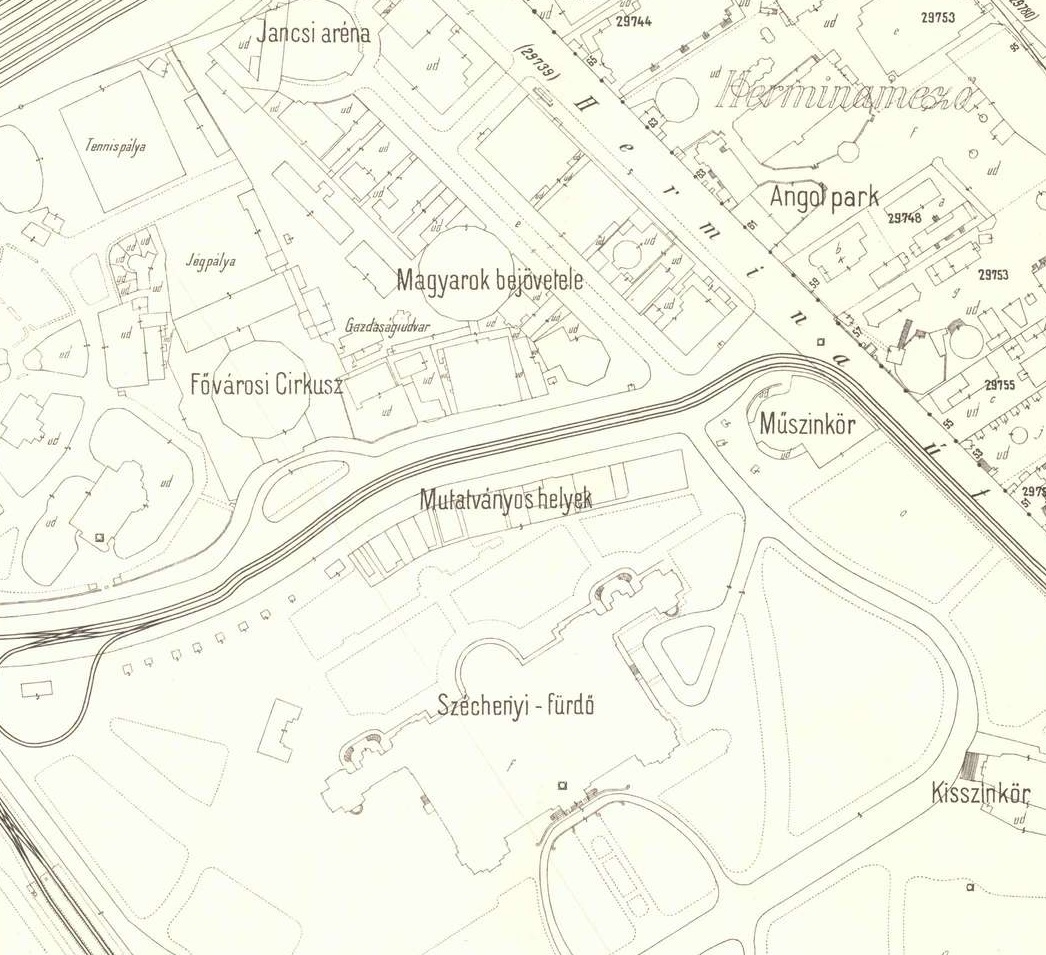
This map, made in 1912, clearly shows that the Széchenyi Bath was built on the site of the former Vurstli (Source: mapire.eu)
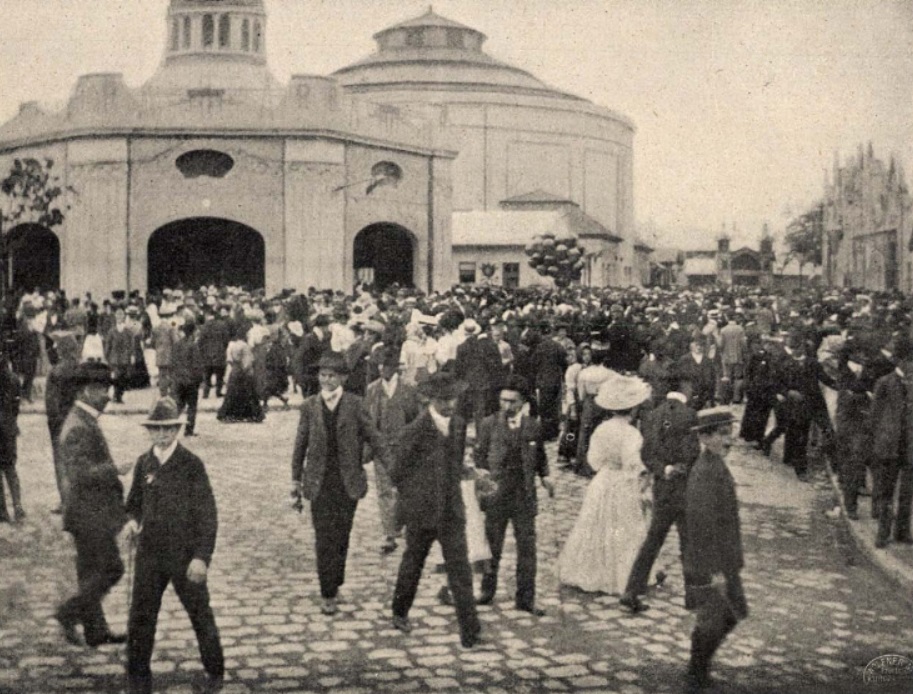
The carousel in front and the Feszty panorama building in the background (Source: Uj Idők, 27 June 1909)
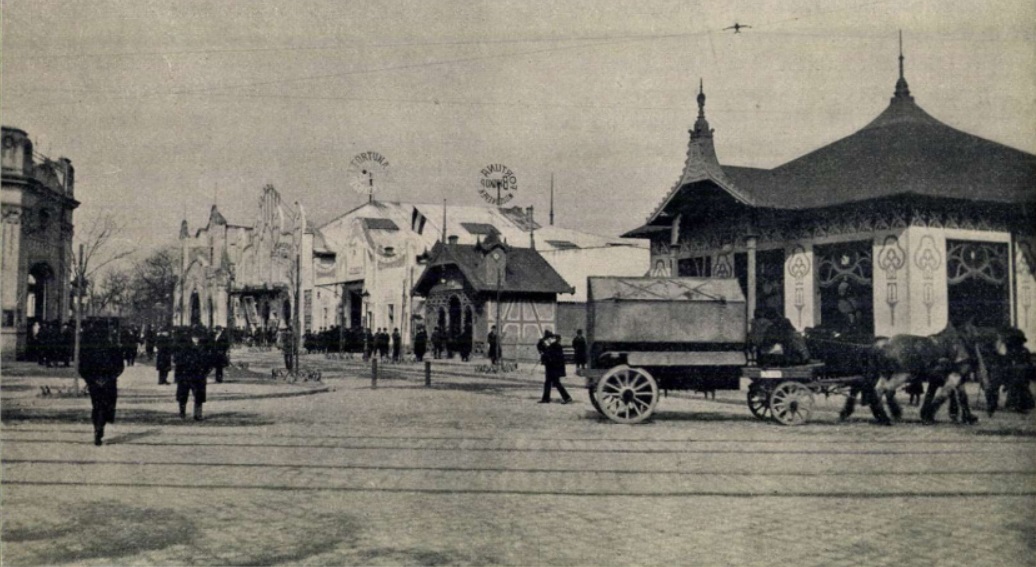
The main street of Vurstli, or the Csudaváros [Wonder City] (Source: Élet, 11 March 1911)
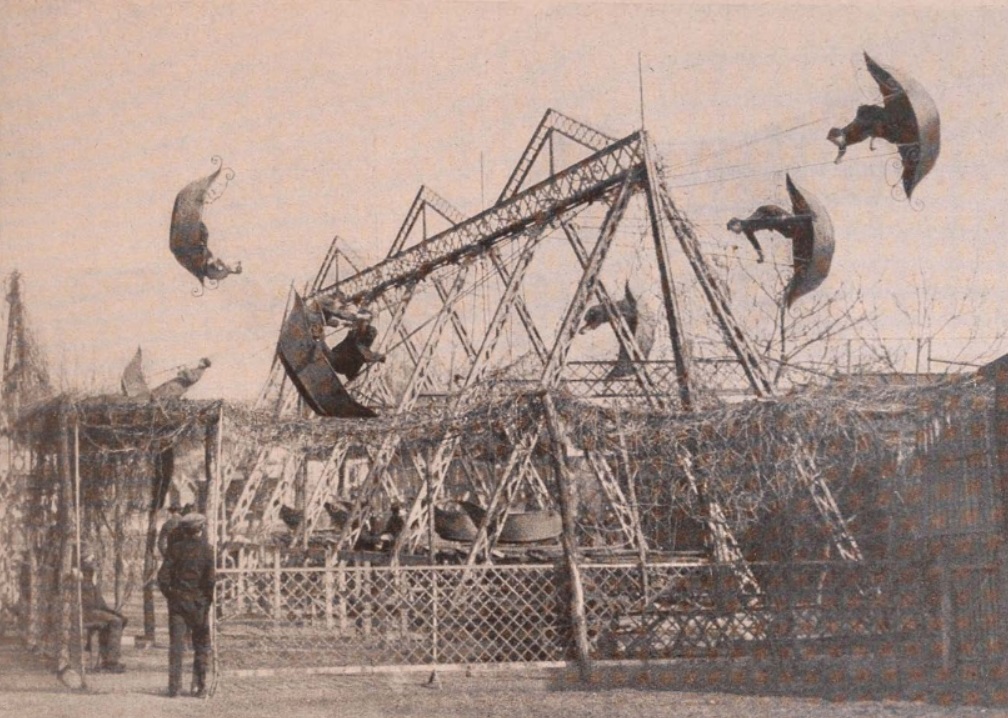
Ship swings a few months before World War I (Source: Uj Idők, 5 April 1914)
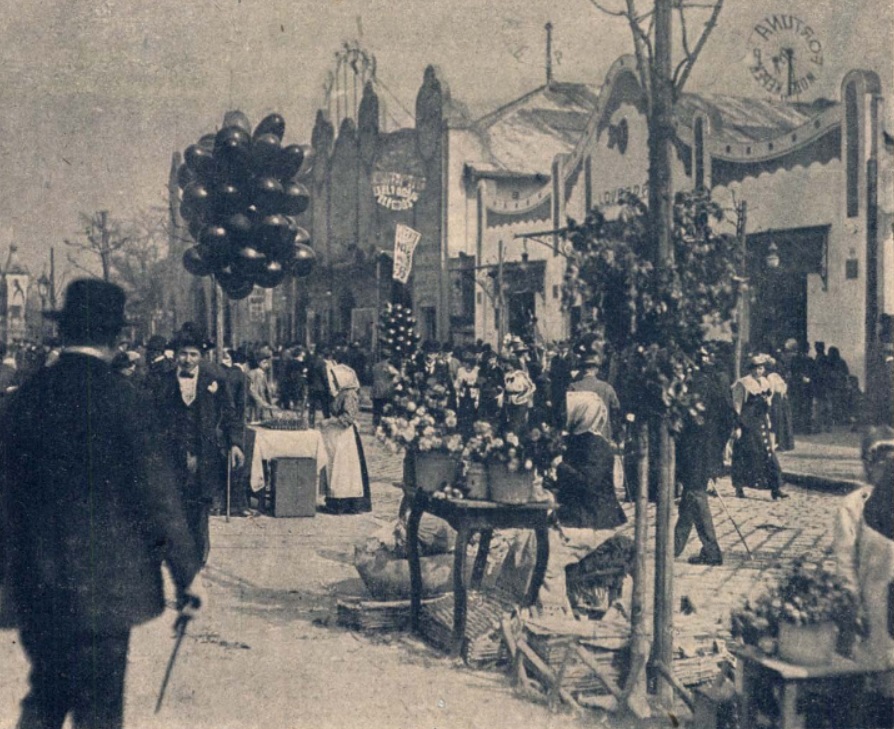
The Vurstli during the First World War (Source: Uj Idők, 28 April 1918)
Due to the construction of the Széchenyi Bath, the Vurstli received space from the Zoo: it later moved to the part between the later Little Amusement Park and Hermina Road, which then extended to the railway. But in the middle of the 1920s, the Széchenyi Bath was expanded, so that the performers crowded into an even smaller place. Although the centenary of Vurstli in 1938 brought a minor upswing, World War II sealed its fate.
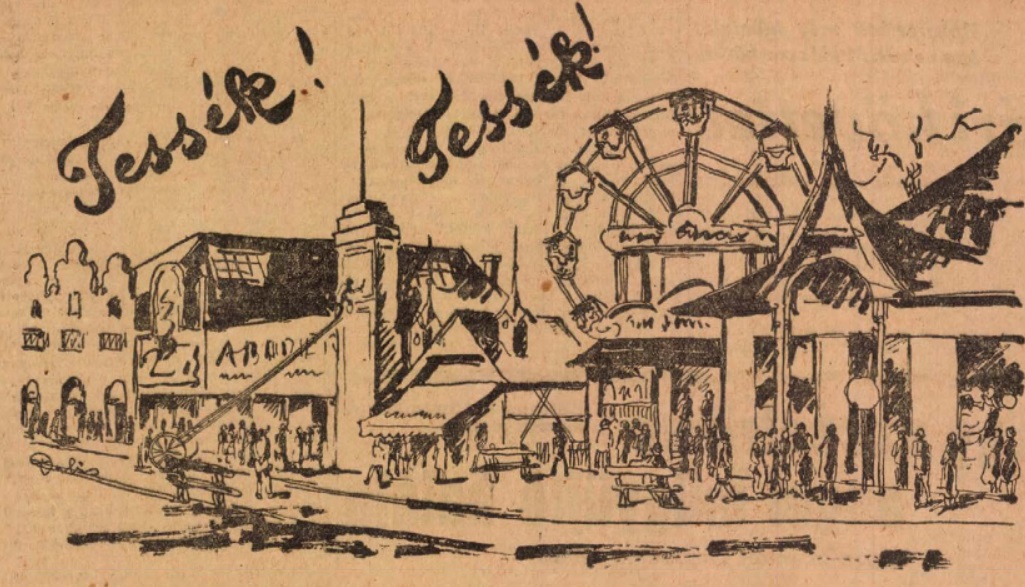
Contemporary graphics about the park from the 1930s (Source: Az Ujság, 9 March 1930)
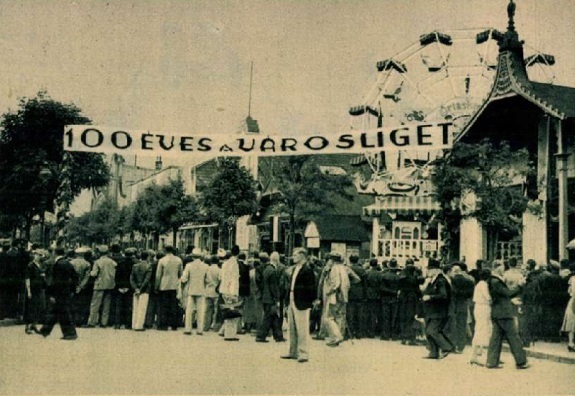
The Vurstli in the Városliget, celebrating its 100th anniversary (Source: Képes Pesti Hírlap, 15 July 1938)
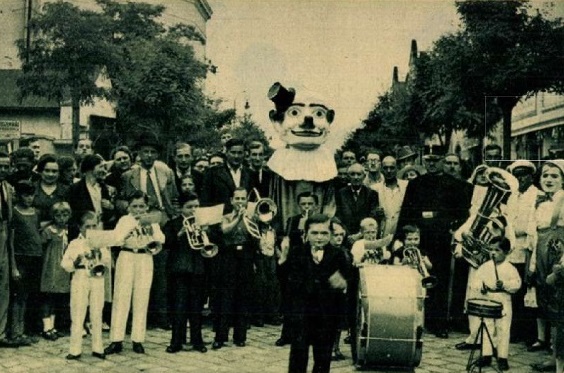
The Vurstli in the Városliget celebrating its 100th anniversary (Source: Képes Pesti Hírlap, 15 July 1938)
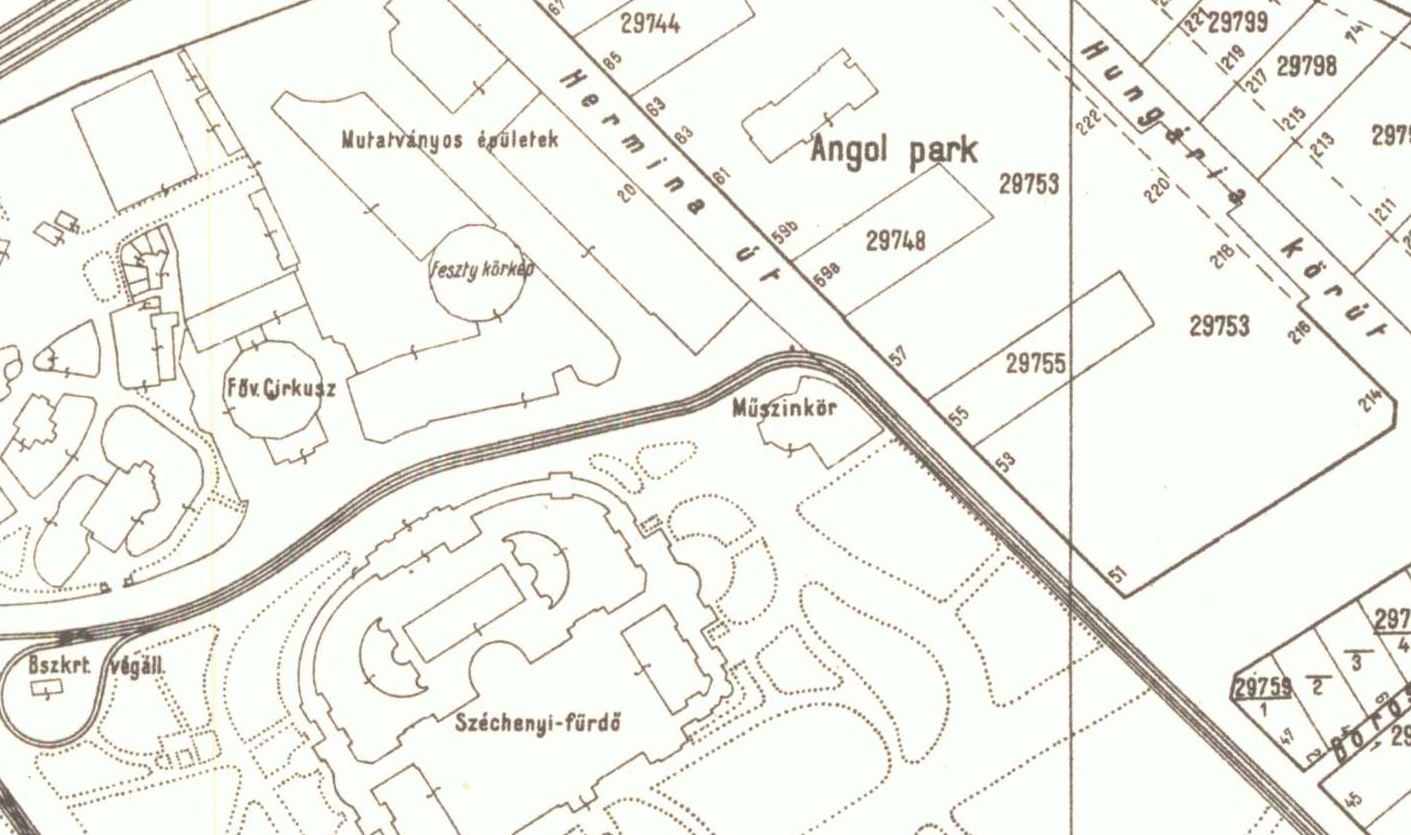
By the 1930s, the bath had completely displaced the Vurstli, which moved to the Zoo area (Source: a map from 1945, mapire.eu
Next to Vurstli, there was the Ős-Budavár, which opened for the 1896 millennium celebrations on the site of the later Budapest Amusement Park. Although it attracted many visitors because of the Millennium Exhibition, by 1910 it had gone bankrupt and was demolished. The site was the Amerikai Park for a short time, which reopened in 1912 as the Angol Park. The Vurstli and the Angol Park were independent of each other, while the Vurstli was free, the Angol Park was fenced in 1913 and an entrance fee had to be paid for it.
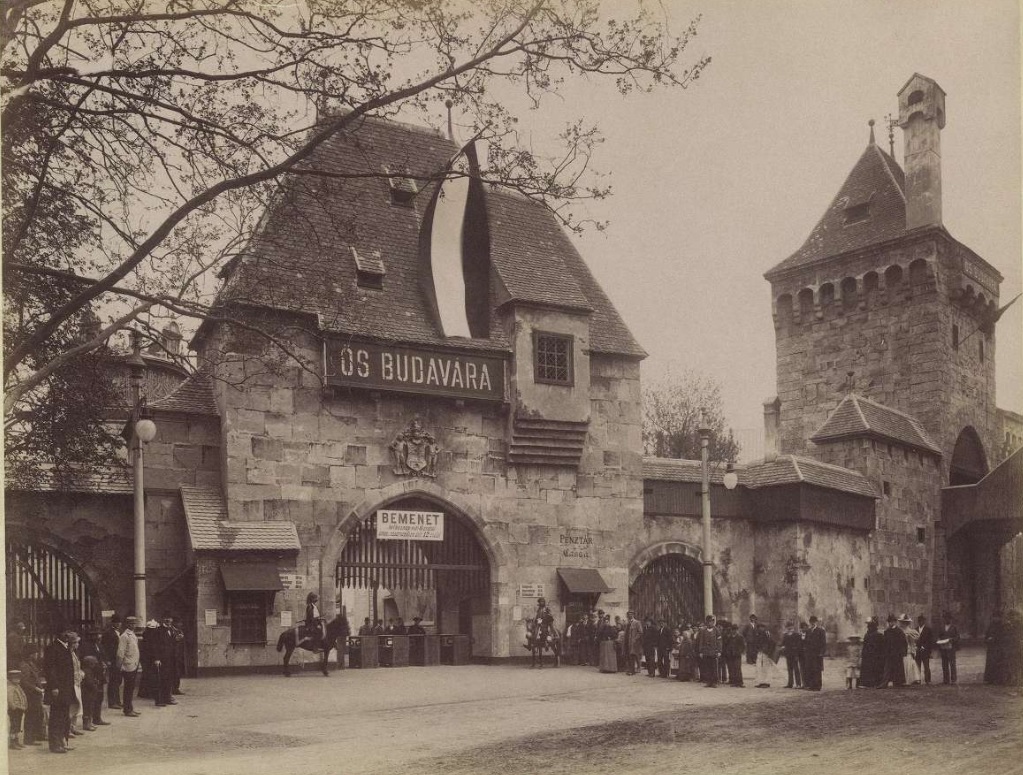
Entrance to Ős-Budavár with a copy of the former Fehérvár Gate in 1896, photographed by György Klösz (Source: Budapest Capital Archives, Archival reference: HU_BFL_XV_19_d_1_09_112)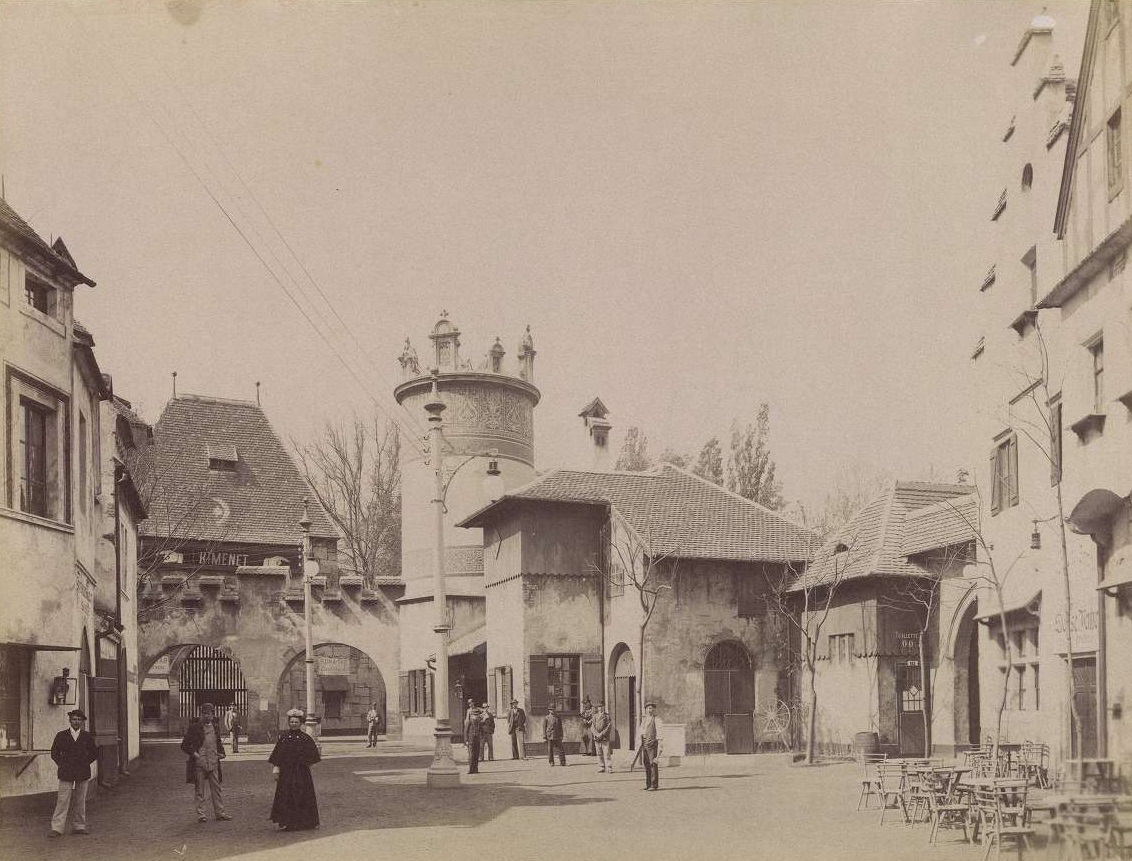
Photo by György Klösz of the exit of Ős-Budavár in 1896 (Source: Budapest Capital Archives, Archival reference: HU_BFL_XV_19_d_1_09_134)
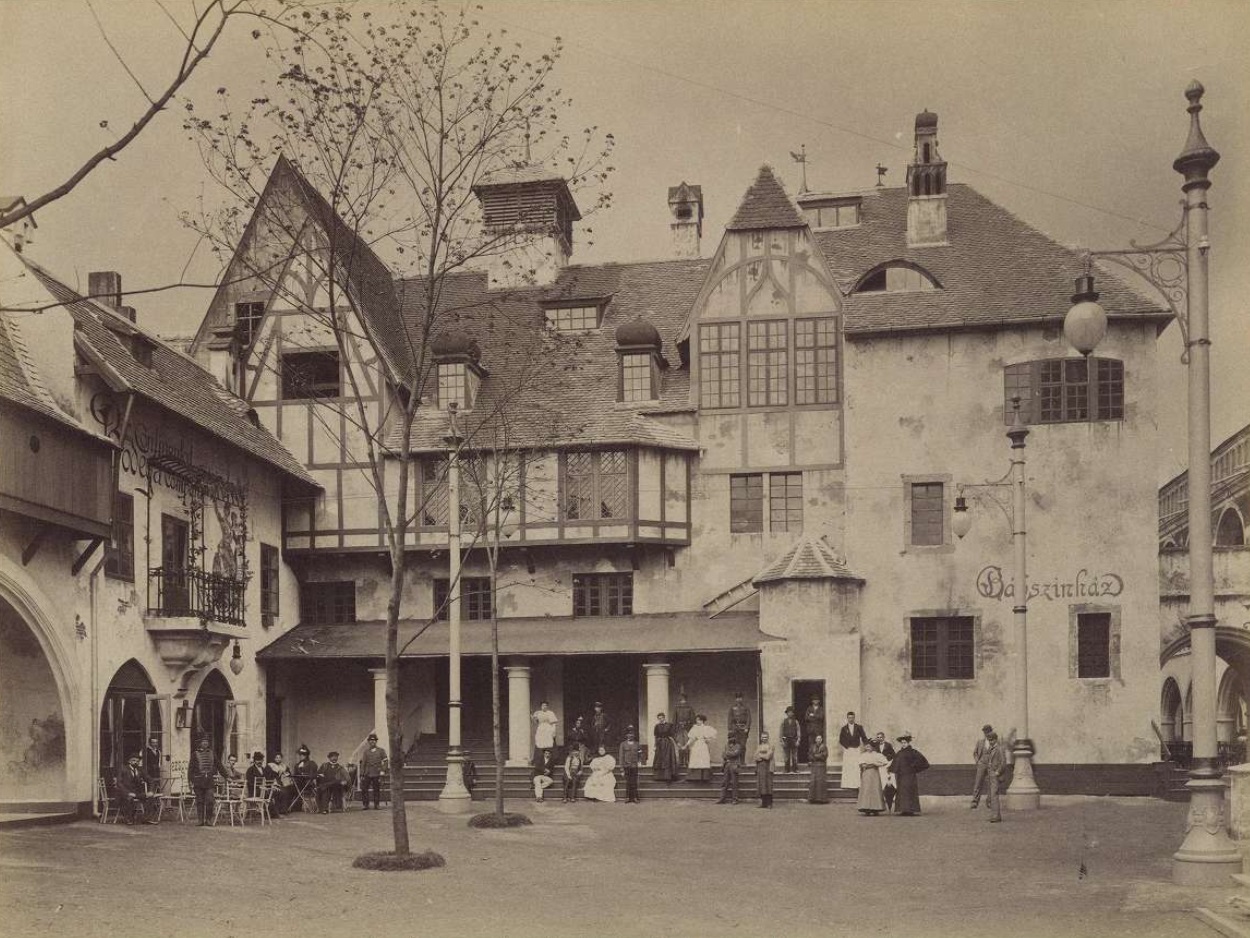
Puppet theater in the territory of Ős-Budavár in 1896, recorded by György Klösz (Source: Budapest Főváros Archives, Archival reference: HU_BFL_XV_19_d_1_09_128)
In the Angol Park, the foundations of the later Amusement Park began to be laid in the years before the First World War, and then after the war, in the 1920s, construction gained real momentum. Then several novelties were built, such as the wooden Roller Coaster, the Cable Car, the toboggan, the wonder boat, or the first dodgem and the steam locomotive light railway. The park was often open until 2 am and was made even more attractive by a number of restaurants, target shooting ranges, photographers, fortune tellers and many other skill games. The huge beer hall, the Alpesi Falu, was also built in the park.
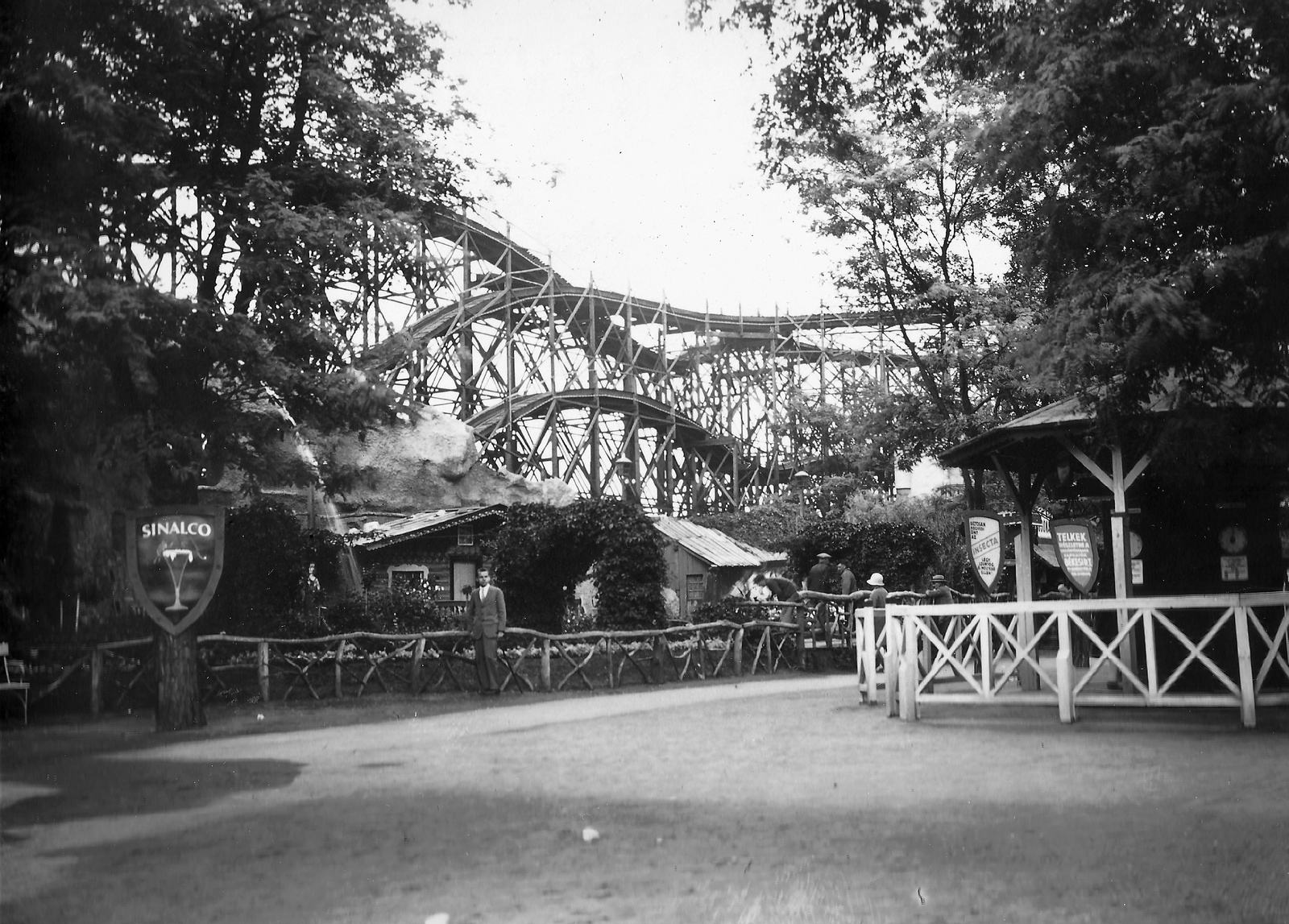
The Roller Coaster in 1928 (Source: Fortepan / No.: 58213)
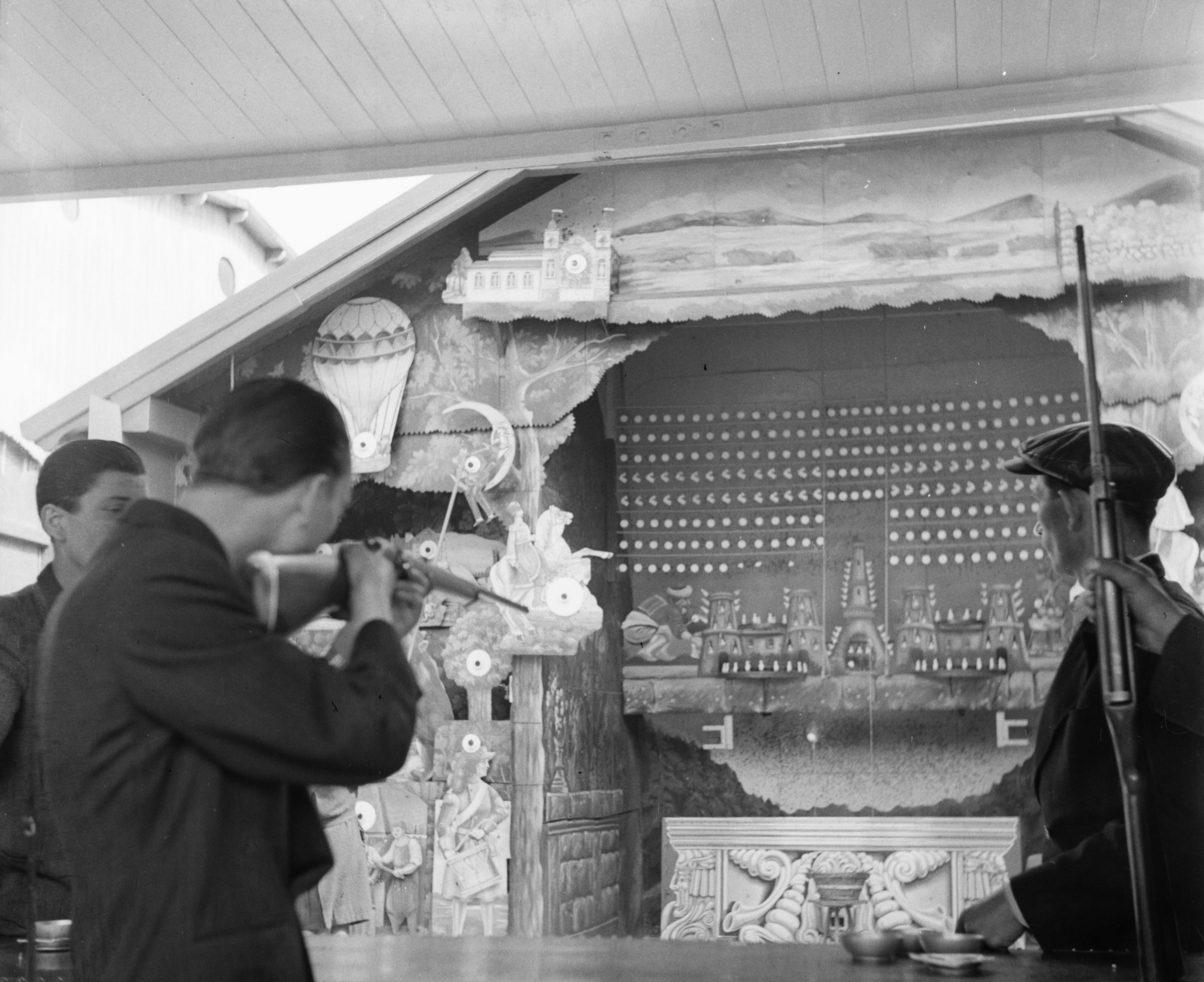
Target shooting in 1939 (Source: Fortepan / No.: 62568)
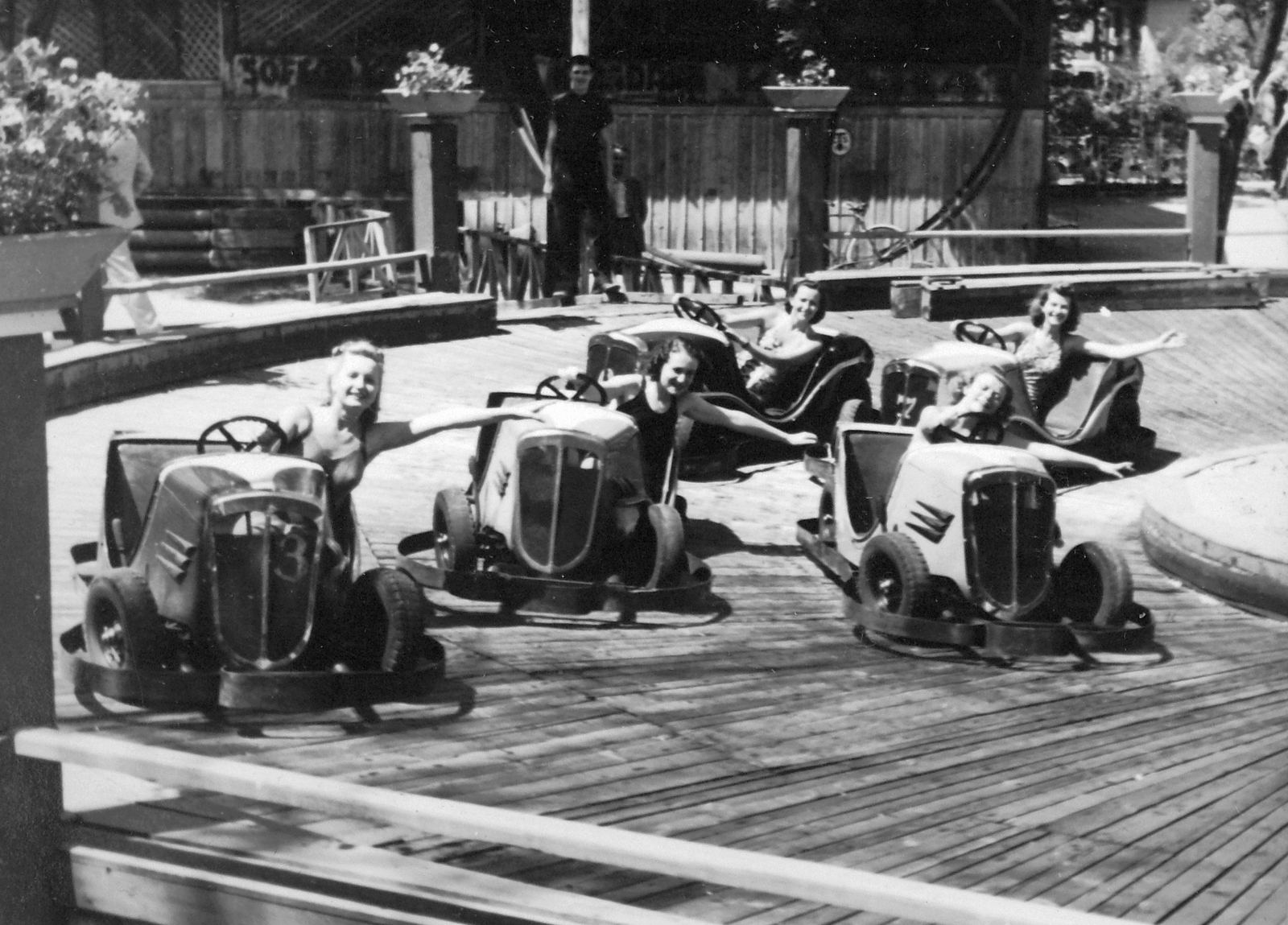
Actresses on board racing cars in 1940 (Source: Fortepan / No.: 18361)
The Angol Park was profitable at first, but was already close to bankruptcy before World War II, yet it still operated. It suffered significant damage during the war, and several of its famous buildings and game constructions were bombed. The Alpesi Falu, where soldiers were housed, burned down. After the war, its area remained ruined for a long time and several buildings had to be demolished.
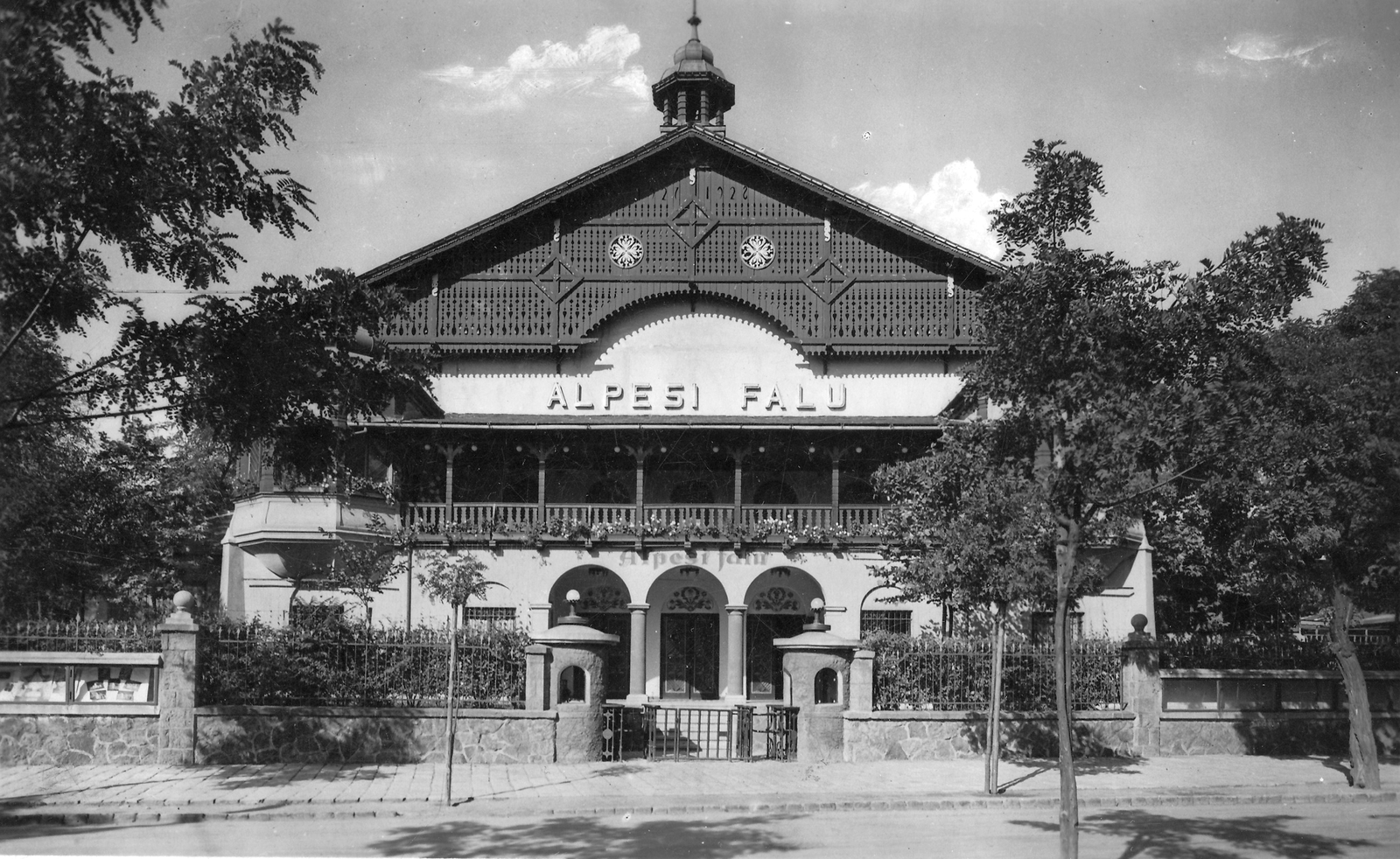
The beer hall called Alpesi Falu from 1935. Soldiers were housed in it during the war and then it burned down (Source: Fortepan / No.: 58256)
The Angol Park, being foreign-owned, soon came under Soviet control and the Capital Amusement Park Municipal Company was established for its nationalization, which opened the Park on 1 May 1950. The war-torn Vurstli could not escape nationalization either, so by merging the two amusement facilities in the Városliget, the Budapest Amusement Park Company was finally born on 22 May 1950. This was followed by major alterations to the area, with many old, well-known games and attractions, such as Lilliput Village or Feszty Panorama.
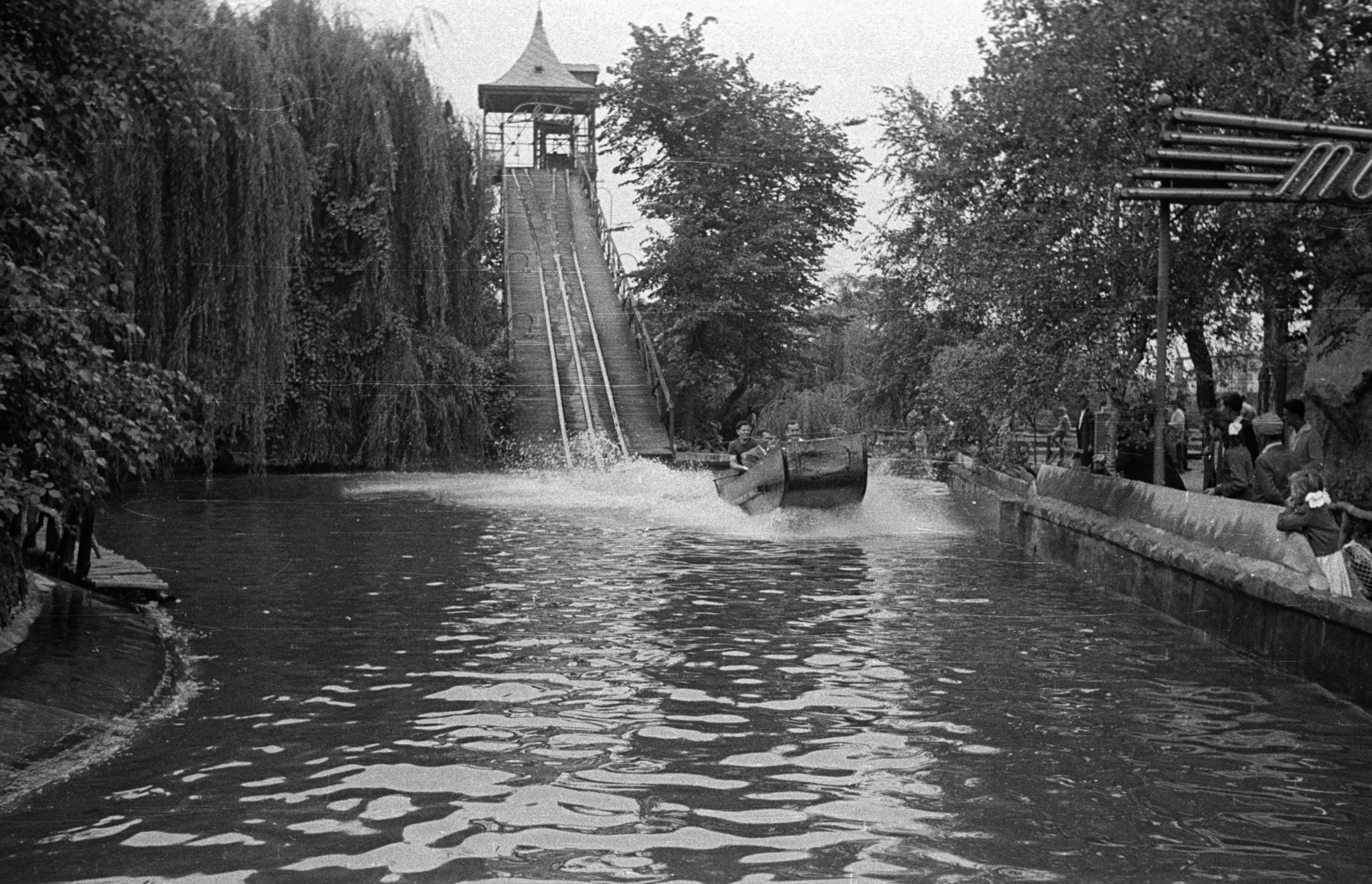
The Cable Car in 1958 (Source: Fortepan / No.: 51658)
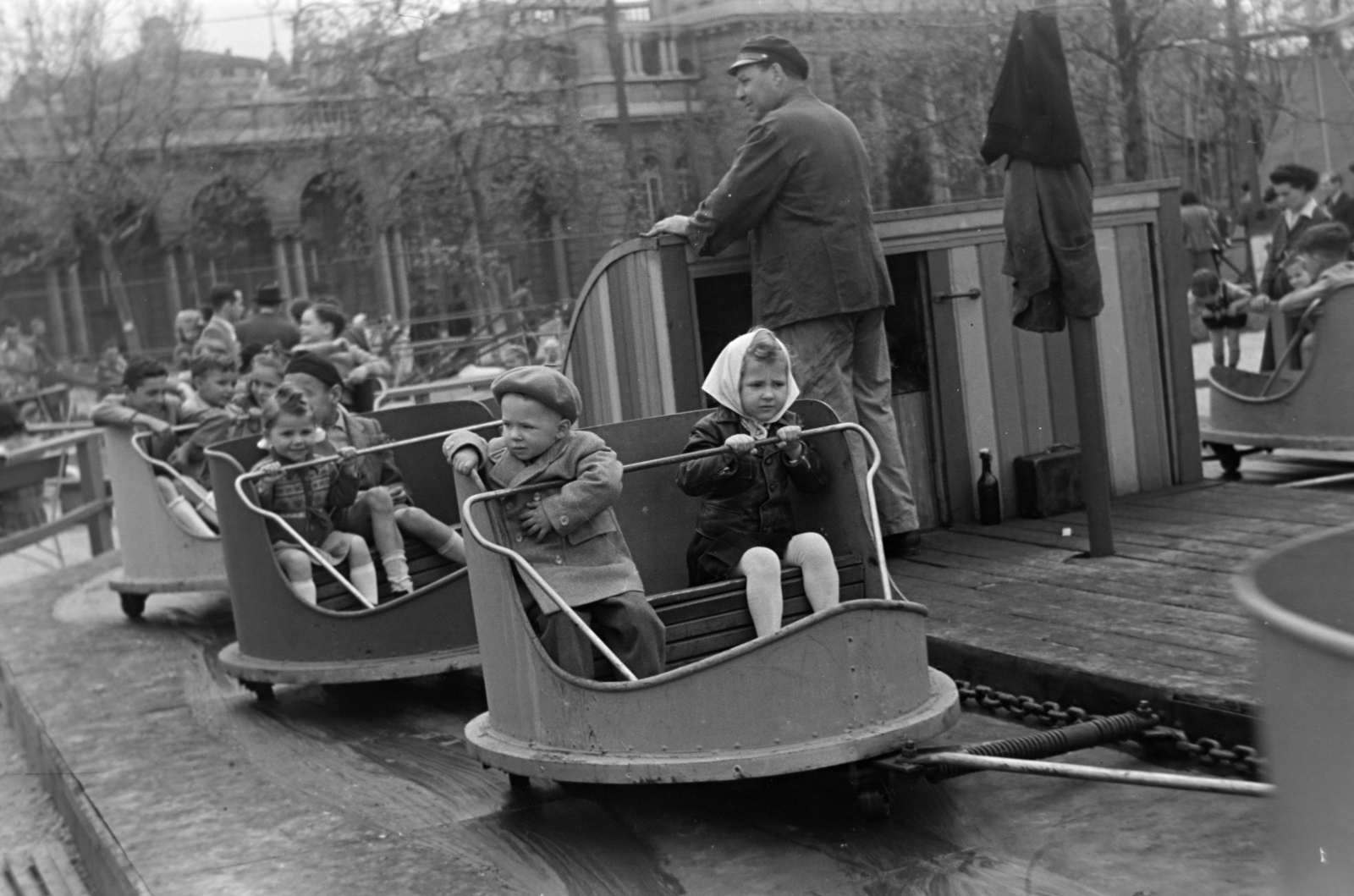
The Little Amusement Park for the little ones in 1956 (Source: Fortepan / No.: 191900)
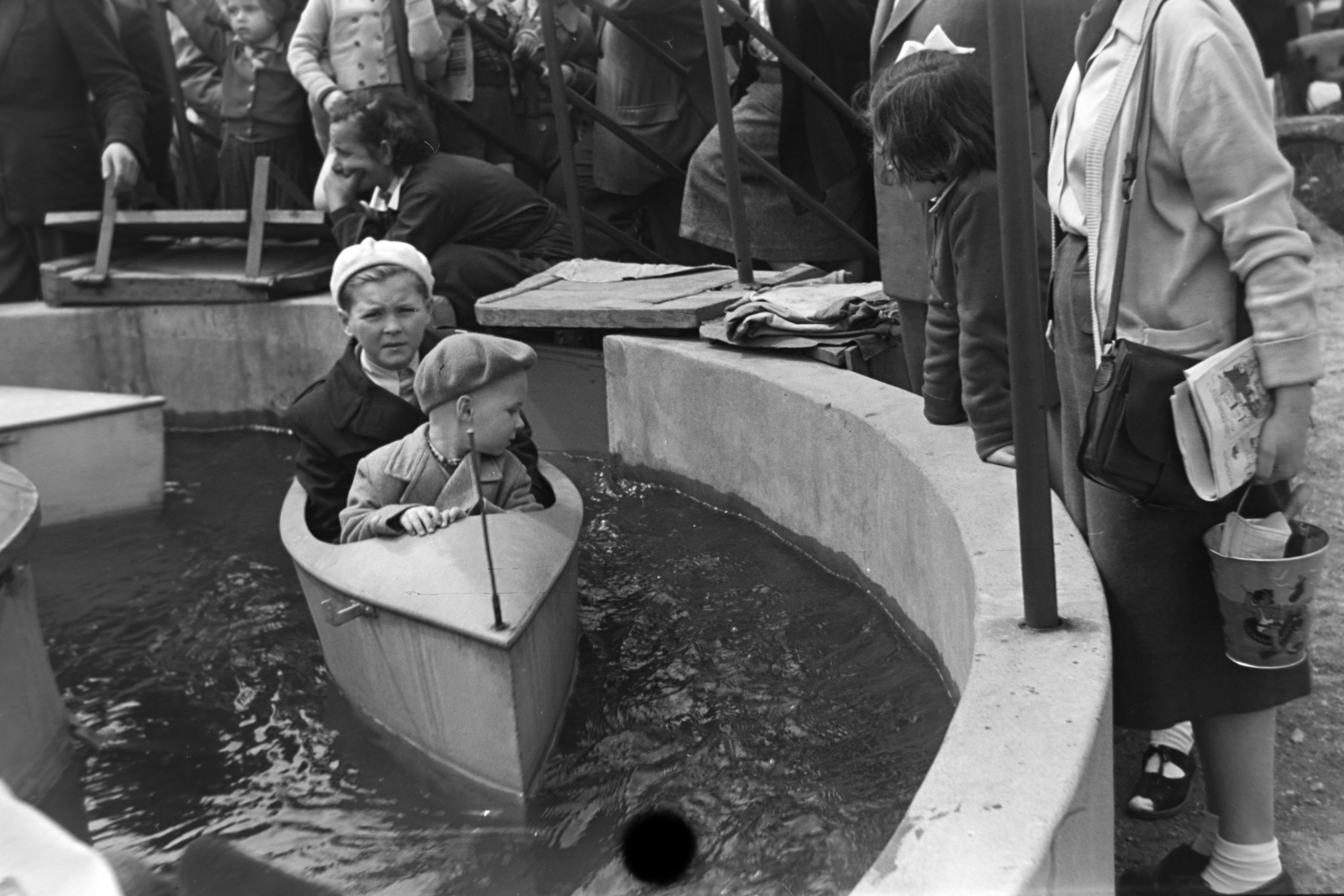
Cruise in the Little Amusement Park in 1956 (Source: Fortepan / No.: 191898)
The construction of the two combined areas lasted until 1953, by which time the Hermina Road, which separated the former Angol Park and Vurstli, was closed, and the entire area was fenced off. At first, the state also tried to use the venue for ideological purposes, so in many places workers ’choirs sang and the decorations were all about class warriors everywhere, but within a few years this was suppressed for greater attendance. The late 1950s and early 1960s marked one of the heyday of the Amusement Park.
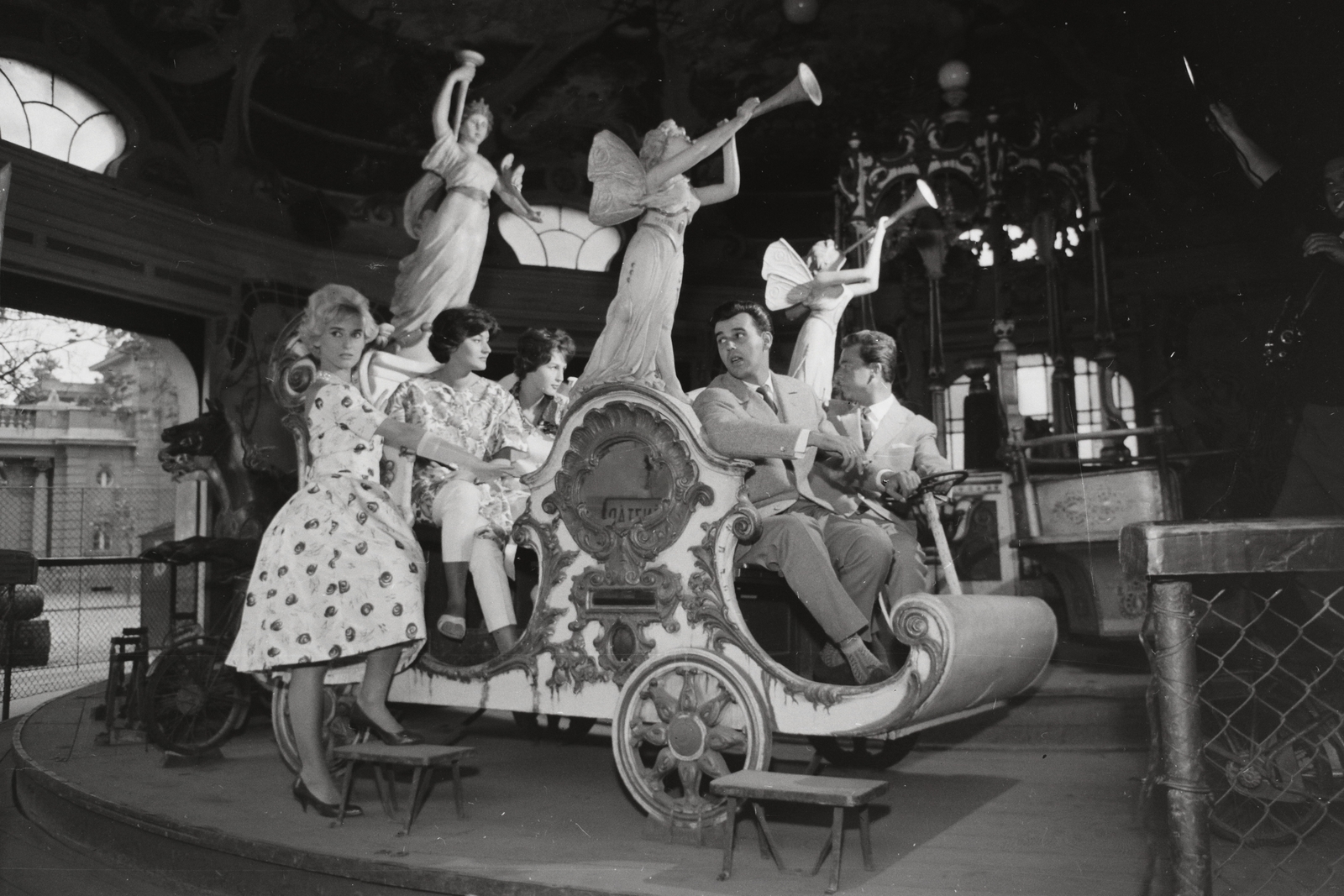
The Horse Carousel in 1962 (Source: Fortepan / No.: 18693)
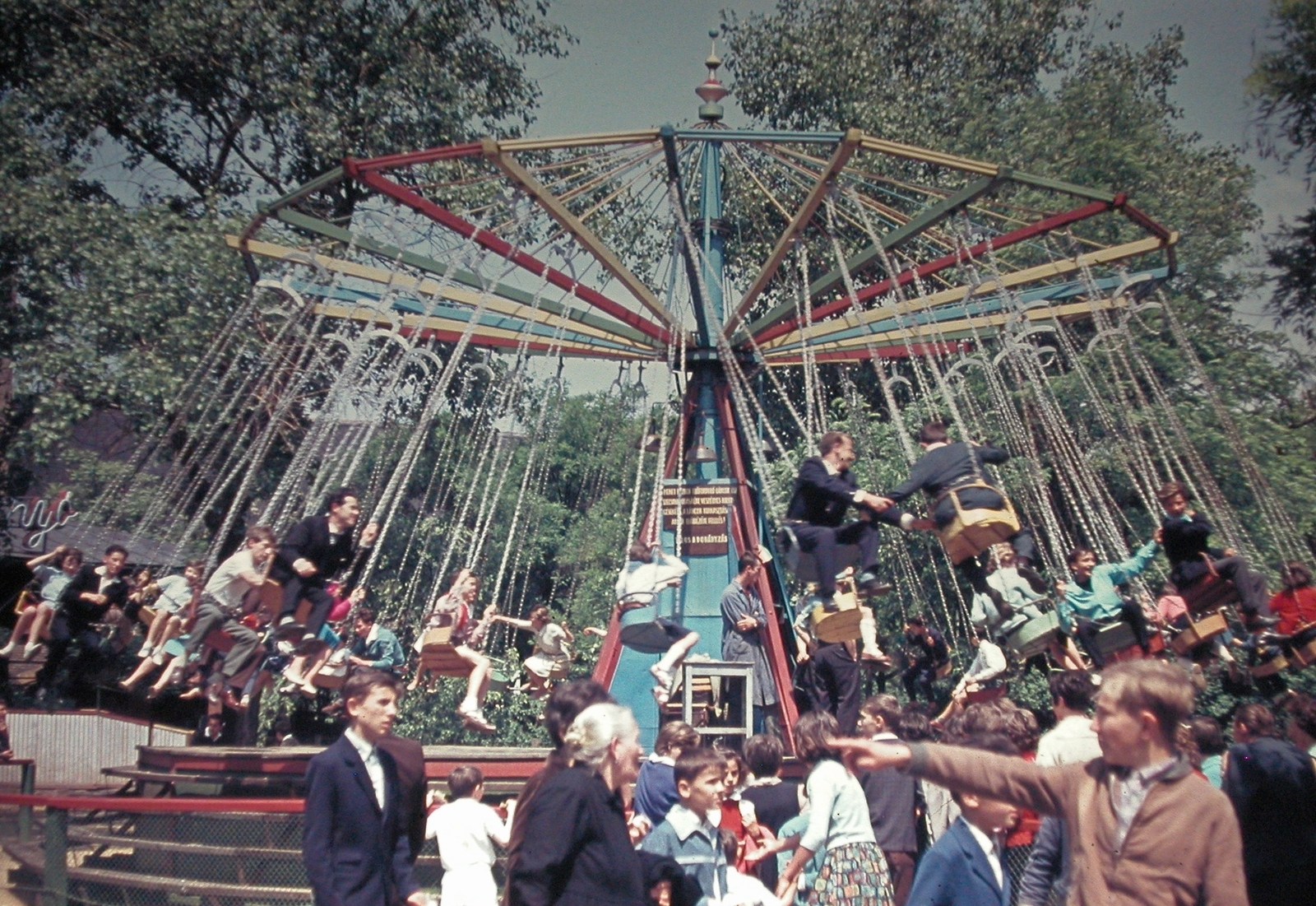
Carousel from 1962 (Source: Fortepan / No.: 3381)
Attendance at the Amusement Park reached millions of people annually, and holidays such as the 1st of May parades further boosted the venue’s popularity, as admission was free at this time. People flocked not only from the capital but also from the countryside and it became customary for families to visit the Amusement Park regularly.
One of the biggest attractions was the bumper car, also known as the dodgem, but the arcade was very popular, with more than a hundred machines waiting for children and adults alike. The old tools were constantly replaced, new ones were put in place: this is how the Cable Car or the old Ferris wheel disappeared and the Cyclone Roller Coaster, the Panorama Wheel or the Enchanted Castle were created.
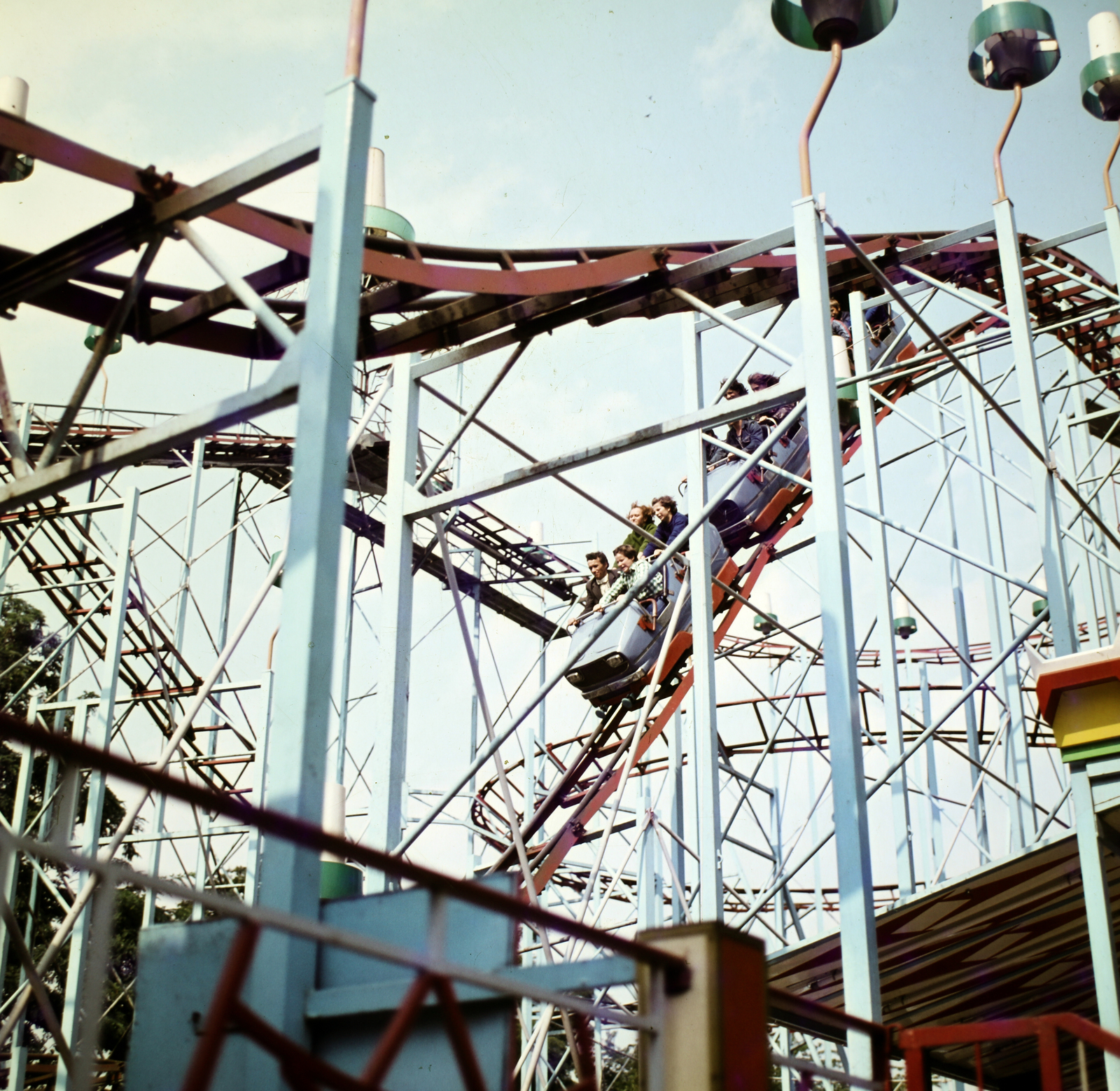
The Cyclone at the Amusement Park in 1980 (Source: Fortepan / No.: 188130)
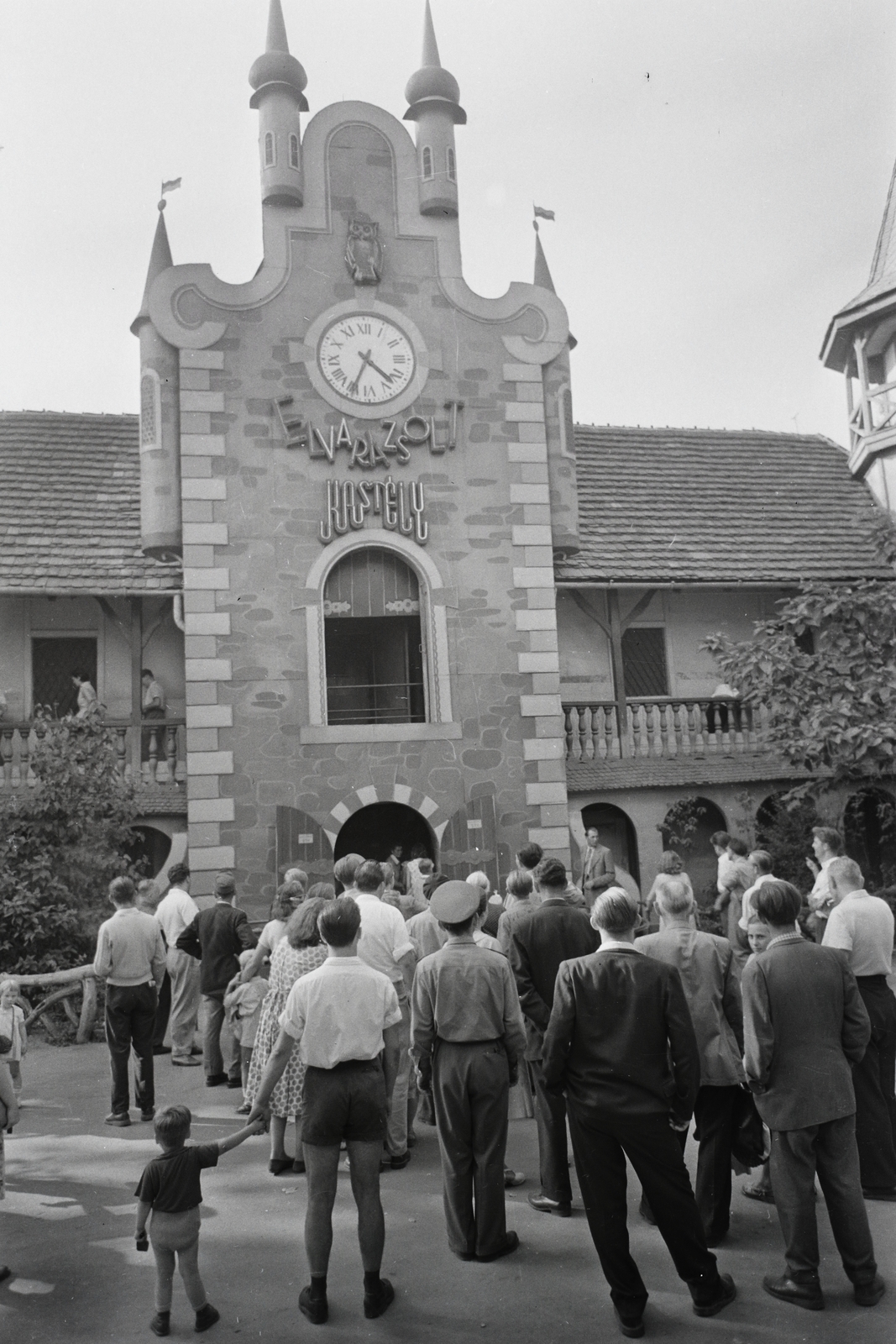
The Enchanted Castle in 1962 (Source: Fortepan / No.: 96375)
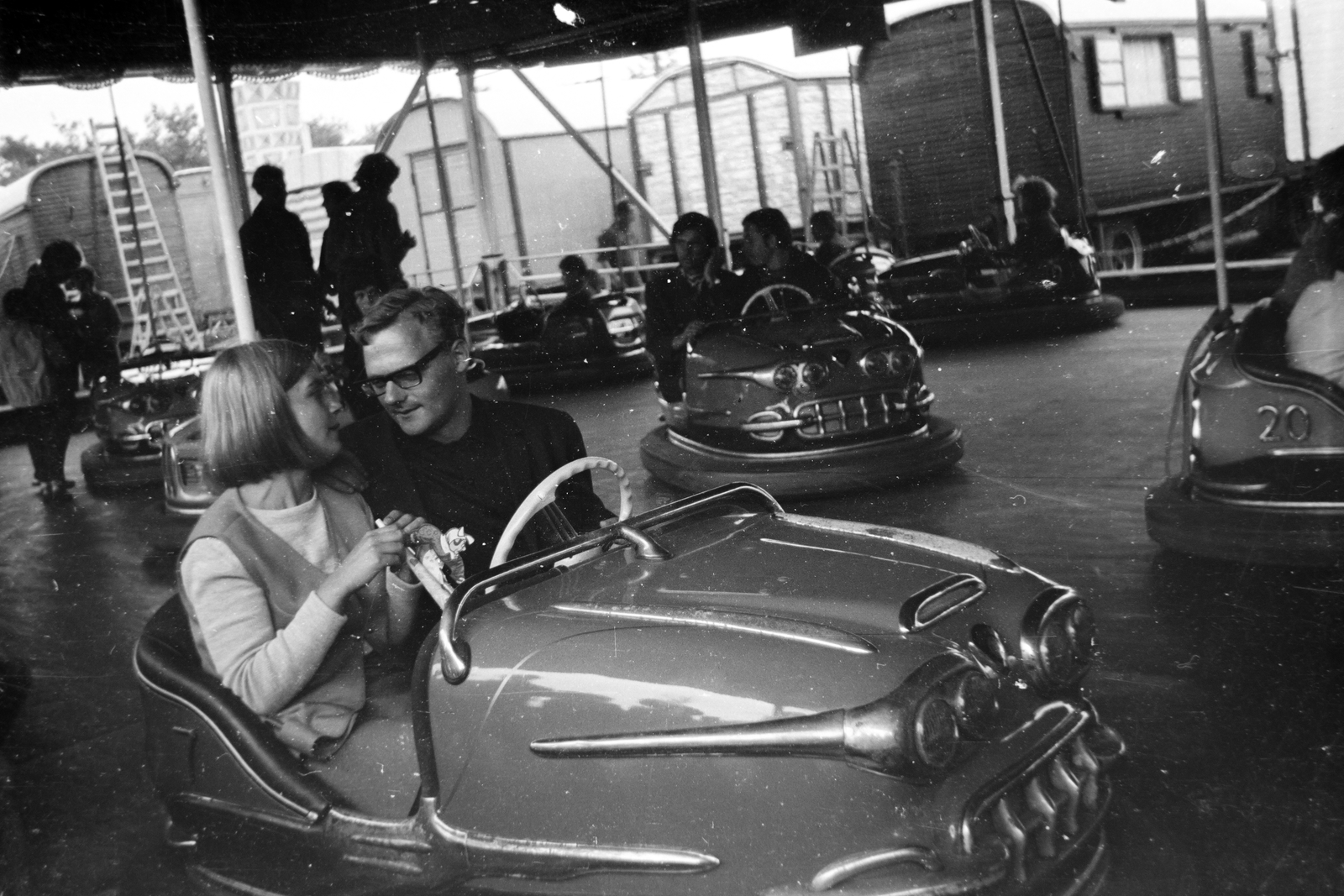
One of the audience's big favorites was the dodgem (Source: Fortepan / No.: 140352)
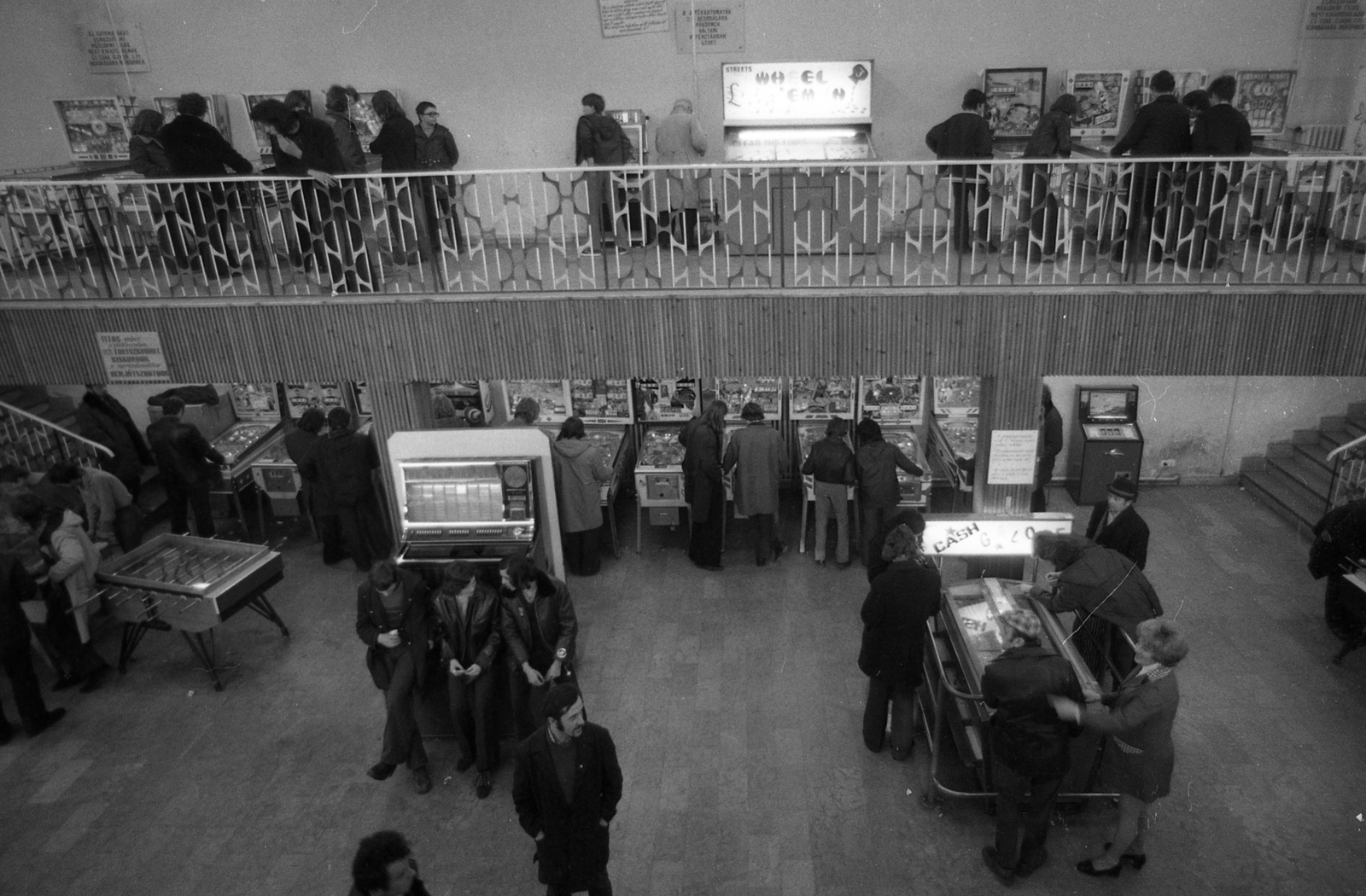
There was also an arcade in the Amusement Park (Source: Fortepan / No.: 88306)

The Ferris Wheel in 1980 (Source: Fortepan / No.: 193630)
The Amusement Park lost its popularity in the 1990s, new entertainment options - travel, multiple TV shows, videos - appeared, and the park became loss-making again. While the Amusement Park was slowly losing its audience, the well-visited Zoo next door was slowly outgrowing its location, so the decision was made to expand the Zoo toward the Amusement Park. And to rebuild the Amusement Park in a more spacious location. After long negotiations, the Budapest Amusement Park was last opened on 30 September 2013.
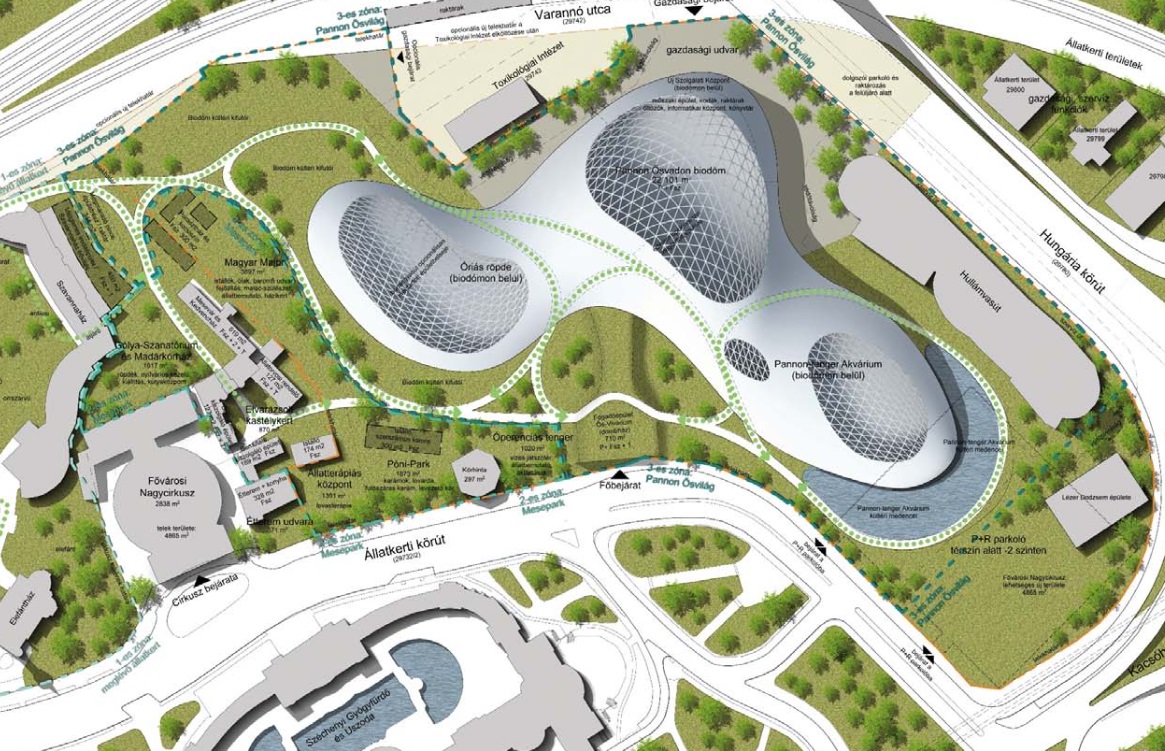
Plan of the new park from 2013 (Source: budapest.hu)
A year after the park closed, Holnemvolt Park opened in the area, now as part of the Zoo, which closed in 2015 and a full reconstruction began. The entrance part, which is a symbol of the park, disappeared permanently in the autumn of 2016, while the Roller Coaster, which has been declared a monument, the Fairytale Boat below and the Horse Carousel have survived.
With the settlement of the area, the construction of Holnemvolt Castle and Pannon Park began. The Holnemvolt Castle was finally handed over in May 2018, while the works at Pannon Park are still ongoing and are scheduled to be completed by 2024.
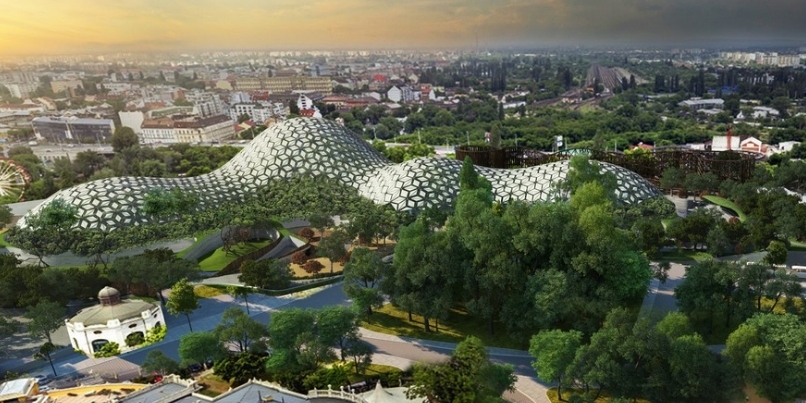
Perspective visual plan of Pannon Park with the Biodome (Photo: MTI / Zoltán Balogh)
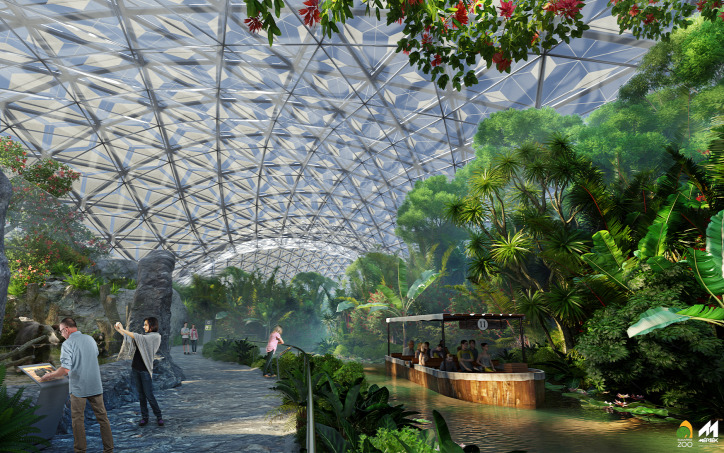
Visual design of the Biodome from the inside (Source: Budapest Zoo and Botanical Garden)
Pannon Park will have a covered Biodome with promenades, animal shelters and nearly three thousand square meters of subtropical vegetation. Despite all this, they also try to maintain the atmosphere of the old Amusement Park, because according to the Zoo's website, "During the developments, of course, we will not forget the legacy of the former Vurstli, Angolpark and Amusement Park."

Visual design of the Biodome (Source: Budapest Zoo and Botanical Garden)
Hopefully, in a few years, people will be able to return here again and indulge in the fun that has been a tradition in this place for hundreds of years.
Cover photo: Entrance to the Amusement Park in 1981 (Source: Fortepan / No.: 126032)

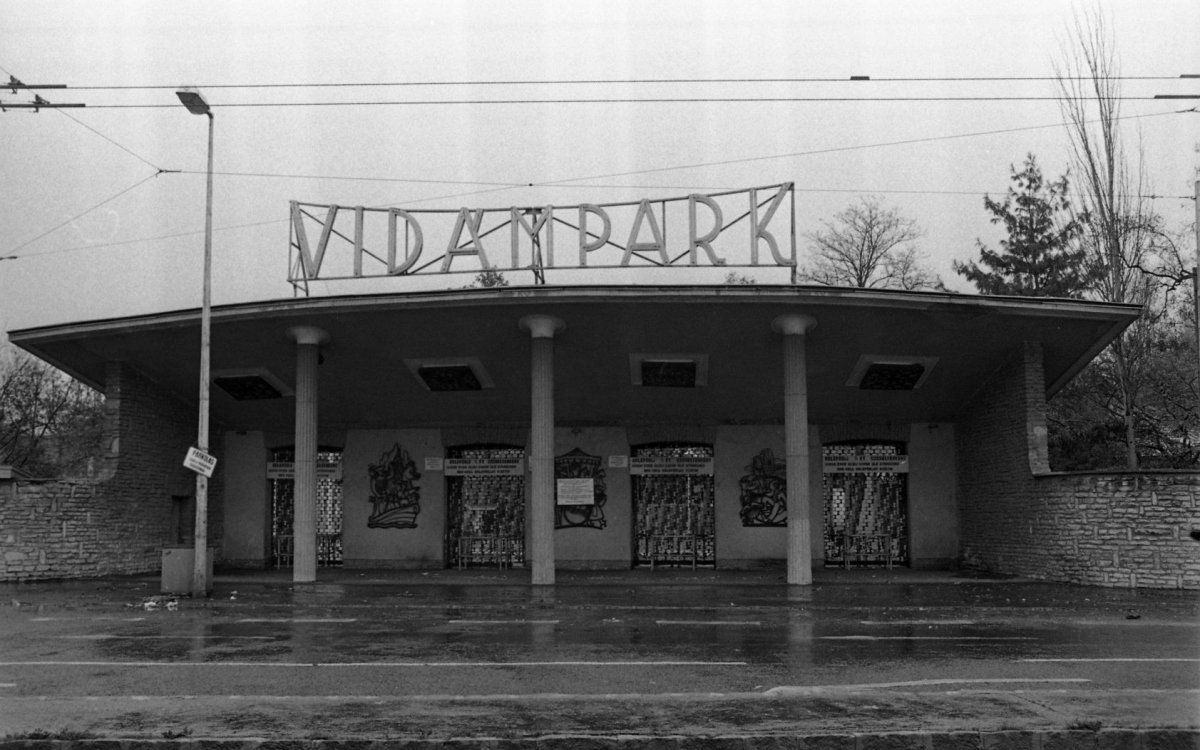



































Hozzászólások
Log in or register to comment!
Login Registration